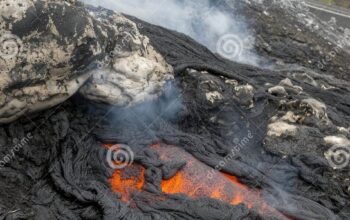Imagine a universe devoid of energy, a radical thought experiment that invites us to ponder the very foundations of physical reality. At first glance, the prompt presents a whimsical challenge: what would happen to matter if energy, the driving force of interactions and transformations, were to vanish completely? To investigate this profound inquiry, we must traverse the realms of physics, exploring the interdependence of energy and matter through a multifaceted lens.
At the core of contemporary physics lies the principle that energy and matter are inextricably linked. According to Einstein’s renowned equation, E=mc², energy (E) is equivalent to mass (m) multiplied by the speed of light (c) squared, a relationship that epitomizes the unity of these two entities. Consequently, if we were to eliminate energy from the equation, mass—the physical substance comprising matter—would also cease to exist or, at the very least, transform beyond recognition.
To grasp the ramifications of an energy-free universe, we must first examine the role of energy in governing the properties of matter. In the absence of energy, atoms—the fundamental building blocks of matter—would lack the requisite dynamism to maintain stability. Electrons, for instance, reside in specific energy levels around the nucleus. If energy were eradicated, these electrons could not occupy their orbits, leading to the disintegration of atomic structures. The result? A collapse of matter as we know it, with atoms breaking apart into their constituent particles: protons, neutrons, and electrons, adrift in a void.
The implications extend beyond atomic integrity into the very fabric of molecular interactions. Chemical reactions, the intricate dance that forms the basis of all materials, hinge on the energy exchanges that facilitate bond formation and breakage. In a scenario where energy is nonexistent, chemical bonds would remain static; molecules could neither form nor decompose. Consequently, the rich tapestry of chemical diversity—from the complex structures of life to the mundanity of everyday substances—would dissolve into a uniformity of nonexistence. Without energy, the fascinating interplay of elements that composes our world would yield nothing more than an inert and homogenous expanse devoid of matter.
Transitioning from microscopic to macroscopic scales, the ramifications of an energy-less cosmos beckon further reflection. The celestial bodies—the stars, planets, and galaxies—derive their existence and motion from the harmonies of energy. Stars, luminous beacons of nuclear fusion, generate energy through processes that convert mass into heat and light. Without energy, stars would not ignite; they would be relegated to darkness, potentially leaving planets like our Earth frozen in a frigid stillness, unable to sustain life. The absence of energy-driven processes that govern climate, atmospheric dynamics, and geological activity would create an uninhabitable, lifeless planet, with matter rendered dormant in a state of stasis.
Furthermore, energy facilitates the laws of thermodynamics, which play a crucial role in the organization of matter. The first law of thermodynamics asserts the conservation of energy, while the second law introduces the concept of entropy as a measure of disorder. In an energy-deprived environment, entropy would be paradoxically absent; matter would cease to experience evolution or change, resulting in a homogenous equilibrium. This intriguing conundrum evokes the question: would matter, stripped of energy, exist in any meaningful form, or would it become an abstract notion, a theoretical construct devoid of substance?
Moreover, let us consider the biological implications of a world without energy. Life is fundamentally an energy-driven phenomenon, thriving on the intricate webs of metabolic pathways that convert energy into sustenance. Organisms rely on energy intake to fuel cellular processes, growth, and reproduction. A void of energy would consign life to extinction; the rich complexity of ecosystems—from the smallest microorganisms to the largest terrestrial mammals—would evaporate, leaving behind a desolate landscape of matter stripped of vitality.
The interplay between energy and matter invites philosophical musings as well. If we hypothesize a reality devoid of energy, does matter retain its identity as “matter”? The essence of matter is often defined by its interactions, properties, and transformations—all governed by energy. Would the remnants of existence in an energy-less universe constitute a new paradigm of reality, challenging our conventional understanding of what it means to “exist”? This inquiry leads us into a profound abyss of existential considerations—from the nature of reality to the very essence of being.
In conclusion, entertaining the notion of a world stripped of energy reveals an intricate tapestry of consequences for matter. The dissolution of atomic structures, the stagnation of chemical processes, the obliteration of celestial bodies, and the extinction of life all emerge from the hypothetical void of energy. Thus, this seemingly playful question unveils a deeper truth: energy and matter are woven together in an inseparable bond, each relying upon the other for existence and dynamism. As we reflect upon this enigmatical scenario, it becomes abundantly clear that energy is not merely a facet of the universe; it is the very engine of reality, propelling matter into the diverse and intricate forms that populate our cosmos.












